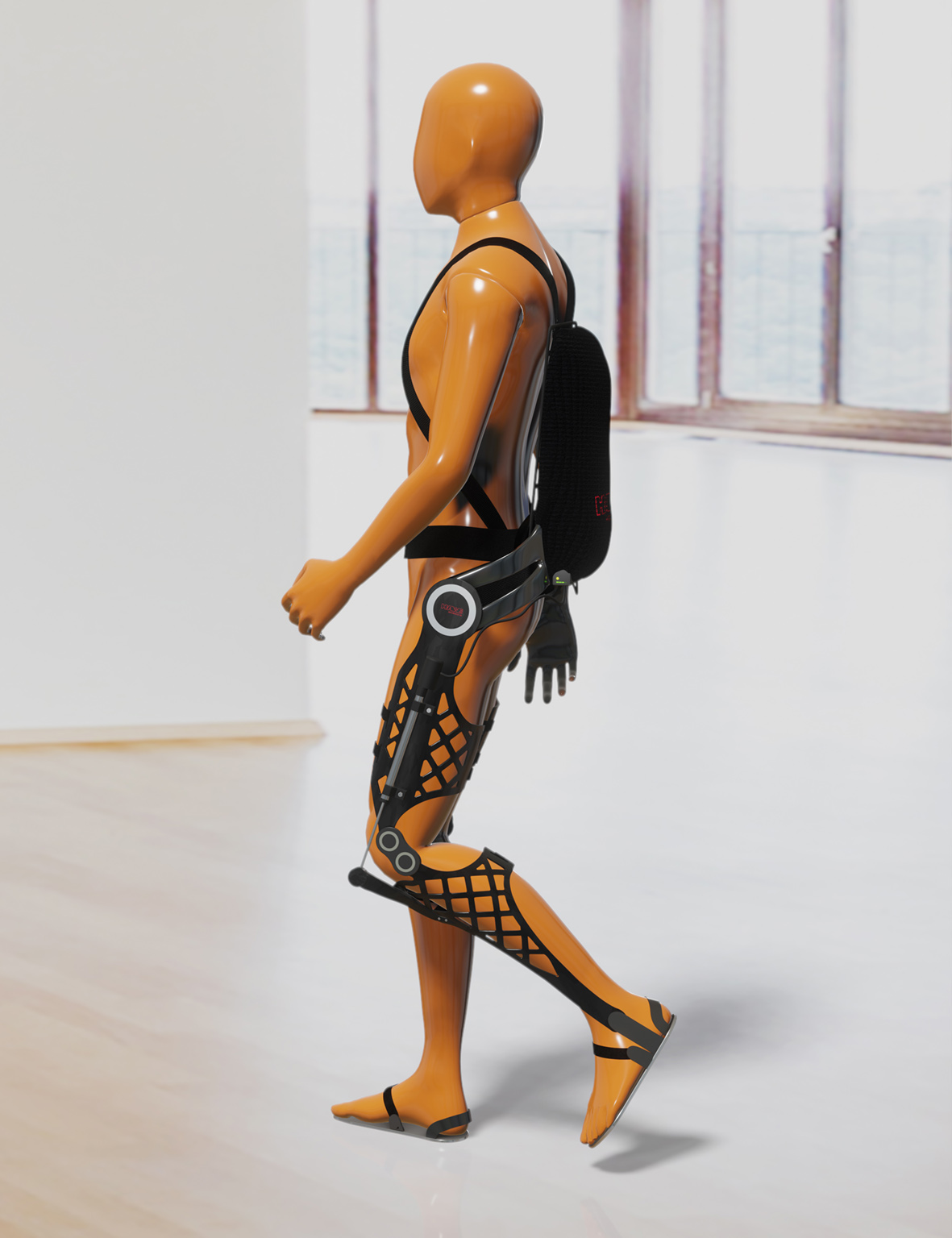A joint research project between HAWE Hydraulik, the Technical University of Munich, and voxeljet AG aims to develop lightweight exoskeletons from a modular design kit. The project brief calls for an exoskeleton “comparable in size and shape to a human arm,” with key connecting components printed by voxeljet.
TUM has a long history of innovation in exoskeleton design. In 2014, TUM researcher Gordon Cheng and his team gained worldwide fame when a paraplegic man wearing their exoskeleton kicked off the first ball at the FIFA world cup. Since then, Dr. Cheng’s team has found that wearing an exoskeleton doesn’t just help people in the moment: it promotes a long-term increase in motor function.

The exoskeleton proposed in this joint research project would use a hydraulic system and 3DP parts for lightness and power (Image via HAWE Hydraulik).
This time, the university’s exoskeleton research will rely on hydraulic parts and 3D printing. To make the exoskeleton more powerful and allow users to go longer between charges, the exoskeleton will be powered by an electrohydraulic system made by HAWE. The system will be made up of a small power unit, a hose system, and a hydraulic cylinder, and will function as the “muscles” of the exoskeleton.
The “tendons” of the exoskeleton, holding it together, will be made via additive manufacturing. Voxeljet AG is a Germany-based company that works primarily in sand and polymer-based binder-jetting, specializing in molds for metal casting. On this project, they will be making connecting parts like integrated hose feed-throughs to make them lighter. The brief calls for “thin-walled, lightweight structures with long cavities and small diameters” to connect the exoskeleton together.
If all goes well, the final prototype will be “comparable in size and shape to a human arm.” While the word “exoskeleton” calls to mind images of a heavy, full-body suit, this prototype follows in the footsteps of other partial-body exoskeletons made using additive manufacturing. The main concern is flexibility; the researchers are hoping to create an exoskeleton capable of end goals from medical rehabilitation to handicraft-making.
Because the end users include people undergoing rehabilitation, the project’s other main goal is lightness. “Every gram counts,” the project brief says, “since the user should not be burdened with a high additional weight.”
Subscribe to Our Email Newsletter
Stay up-to-date on all the latest news from the 3D printing industry and receive information and offers from third party vendors.
You May Also Like
Profiling a Construction 3D Printing Pioneer: US Army Corps of Engineers’ Megan Kreiger
The world of construction 3D printing is still so new that the true experts can probably be counted on two hands. Among them is Megan Kreiger, Portfolio Manager of Additive...
US Army Corps of Engineers Taps Lincoln Electric & Eaton for Largest 3D Printed US Civil Works Part
The Soo Locks sit on the US-Canadian border, enabling maritime travel between Lake Superior and Lake Huron, from which ships can reach the rest of the Great Lakes. Crafts carrying...
Construction 3D Printing CEO Reflects on Being Female in Construction
Natalie Wadley, CEO of ChangeMaker3D, could hear the words of her daughter sitting next to her resounding in her head. “Mum, MUM, you’ve won!” Wadley had just won the prestigious...
1Print to Commercialize 3D Printed Coastal Resilience Solutions
1Print, a company that specializes in deploying additive construction (AC) for infrastructure projects, has entered an agreement with the University of Miami (UM) to accelerate commercialization of the SEAHIVE shoreline...





























